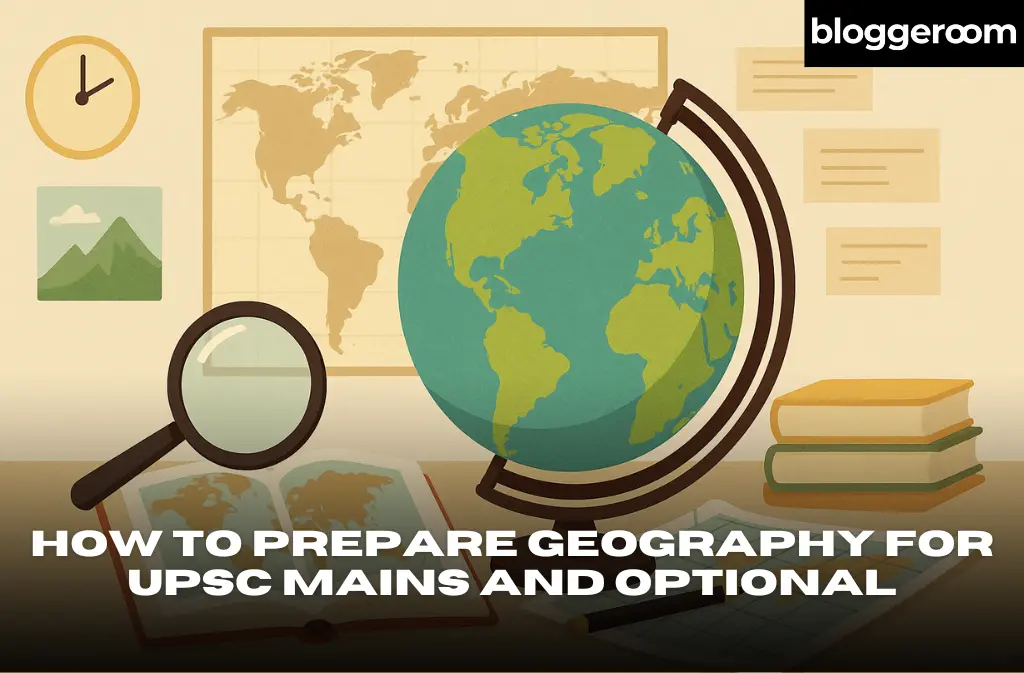How to Prepare Geography for UPSC Mains and Optional
Many aspirants underestimate Geography because it feels like a “school subject.” In reality, it is one of the most versatile areas of the UPSC syllabus. It appears in General Studies (GS) and is also among the top three optional subjects chosen by candidates every year. If you plan your approach carefully, Geography can become a scoring and time-saving paper.
Why Geography Matters in UPSC
Geography builds a bridge between static facts and current affairs. Topics such as monsoons, land use change, disaster management or Himalayan ecology show up across GS Paper I and III and also in essays and interviews. As an optional, its clear syllabus and map-based answers make it easier to fetch marks if prepared properly.
Knowing What to Study vs. What Not to Study
Most aspirants drown in information overload. The first rule of UPSC preparation is not “what to read” but “what to leave.” Here’s a balanced view:
High-Yield Areas to Focus On
- Physical Geography: Earth’s interior, plate tectonics, climate systems, soils, hydrology.
- Indian Geography: Relief features, rivers, agriculture, natural hazards, regional differences.
- Human & Economic Geography: Population, settlements, industries, resources, transport.
- Environment & Ecology: Biodiversity, pollution, climate change, environmental laws.
- Geospatial Tools: Basic remote sensing and GIS, interpretation of thematic maps.
- Current Linkages: Floods, droughts, river interlinking, climate agreements.
Areas to De-prioritise
- Overly technical remote sensing algorithms.
- Obscure local details not in the syllabus.
- Outdated facts from very old books unless still relevant.
- Extra case studies that have no past-year paper relevance.
This selectivity helps you conserve time for revision and answer writing.
Integrated Strategy for Mains and Optional
- Overlap Smartly: Topics like monsoons, biomes and soils appear in both GS and optional papers. Read once, revise twice.
- Use Standard Sources: Start with NCERTs for clarity, then graduate to standard authors like Savindra Singh or Majid Husain for optional depth. Combine these with the latest government reports.
- Visual Notes: Geography rewards diagrams. Draw maps, flowcharts and sketches in your notes and in the exam.
- Practise Past Papers: UPSC repeats themes even if the wording changes. Solving old papers reveals the pattern and time needed.
- Link with Current Affairs: Maintain a separate geography section in your news notes. Use real examples in your answers.
Making Your Preparation Efficient
- Quality over Quantity: A solid grasp of fewer topics beats superficial coverage of many.
- Regular Revision: Space out reviews rather than rereading entire books.
- Answer Writing: Practise 150 and 250 word answers with diagrams; get them evaluated.
- Stay Updated: Use the latest data for population, agriculture or climate to add credibility to your answers.
Conclusion
Geography can be a high-return subject if approached with discipline and clarity. By knowing what matters, cutting out the noise, and steadily linking theory with current events, you convert a vast syllabus into a manageable, scoring paper. Treat maps and diagrams as your secret weapon, revise relentlessly, and remember: in UPSC preparation, selectivity and consistency are as important as hard work.







